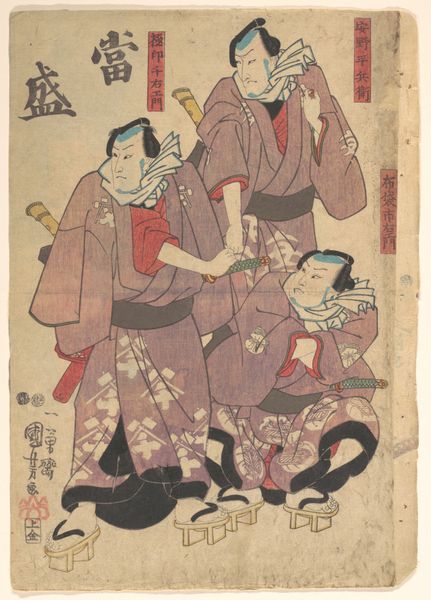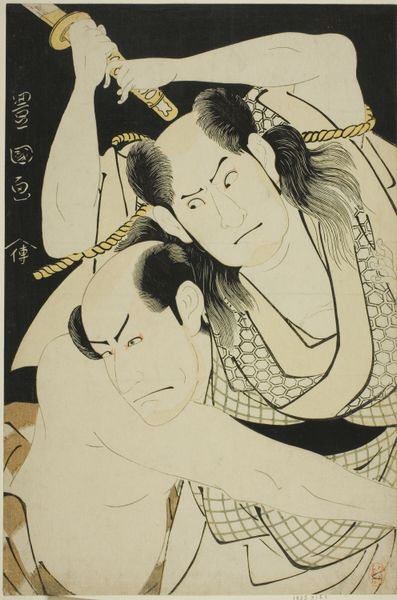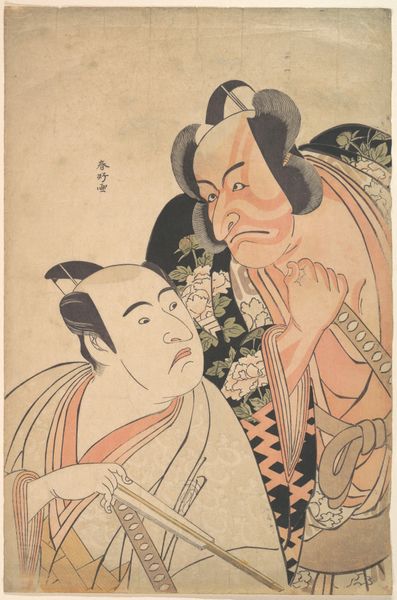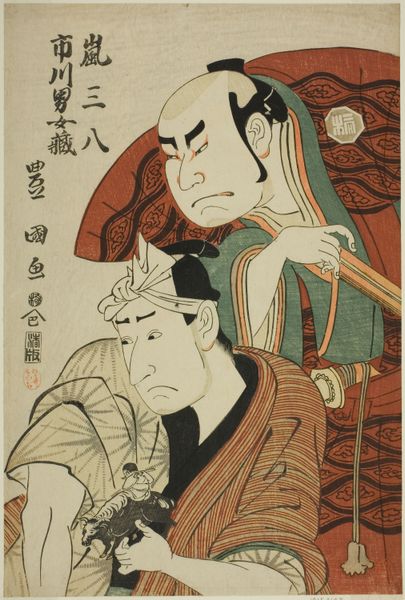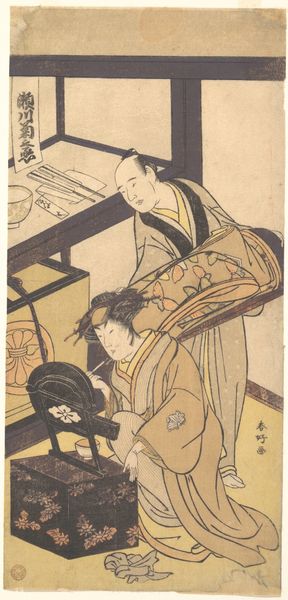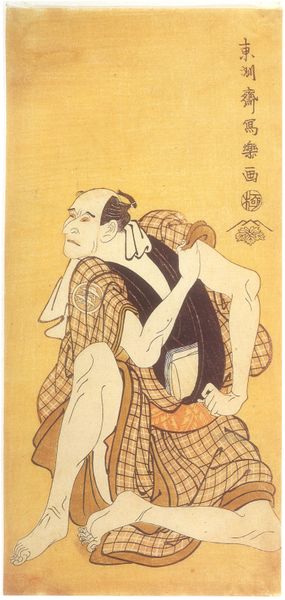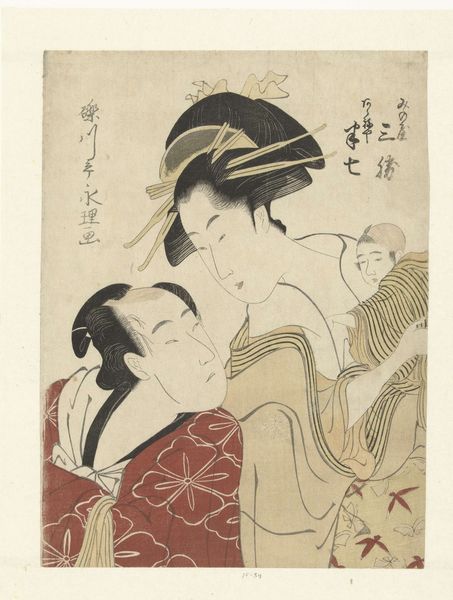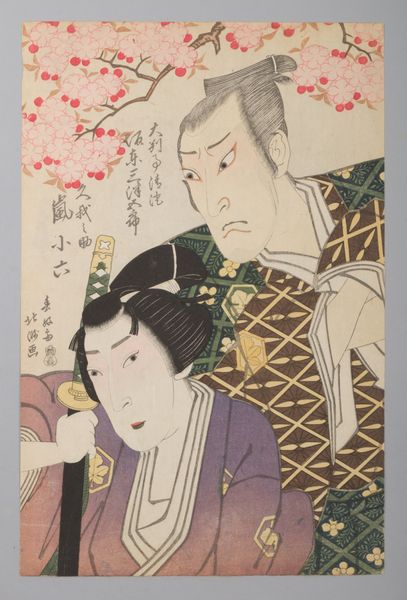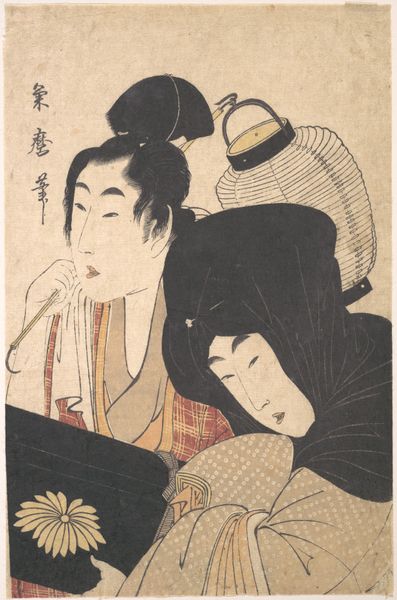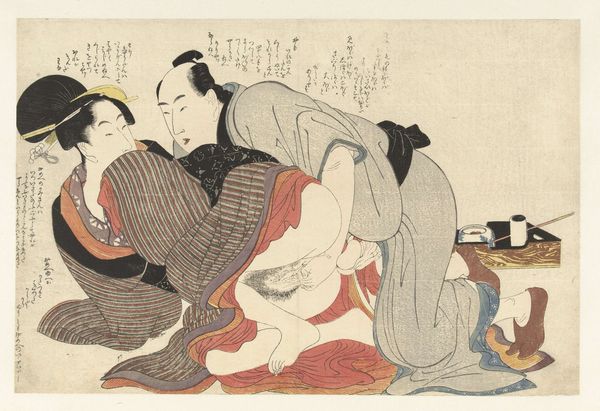
Portret van Sawamura Sojuro III en Segawa Kikunojo III 1794 - 1798
0:00
0:00
print, woodblock-print
# print
#
asian-art
#
caricature
#
ukiyo-e
#
figuration
#
woodblock-print
#
genre-painting
#
erotic-art
Dimensions: height 372 mm, width 255 mm
Copyright: Rijks Museum: Open Domain
Curator: Here we have "Portret van Sawamura Sojuro III en Segawa Kikunojo III" by Utagawa Toyokuni I, likely created between 1794 and 1798. It's a woodblock print, currently residing in the Rijksmuseum collection. Editor: My first thought is how tense it is. There's almost a theatrical melodrama emanating from the faces. You've got this stark contrast between the man's glaring intensity and the woman's almost defeated posture. Curator: Absolutely. It really captures the drama inherent in Kabuki theatre, a very popular subject for Utagawa prints at the time. Kabuki allowed for an examination and exaggeration of social archetypes. Consider that these are not merely portraits, but representations of famed actors *in* character. Editor: That makes the exaggeration of the features even more purposeful. Look at the man’s intense gaze, the tightness around his mouth, but then consider how the patterning of the kimono serves as a counterpoint. Do you see how the material mediates the high emotion, a grounding mechanism against the performance? Curator: Indeed. And the artist’s choice of woodblock printing allows for a certain mass production, making these images accessible to a broader public. These prints were consumed almost like celebrity gossip is today, offering a glimpse into the popular culture and theatre scene of Edo-period Japan. They become social currency, defining and reflecting popular taste. Editor: Let’s also think about the labor involved in the woodblock process. From the artist's design to the carving and finally the printing, so many hands would be involved in each individual image that would then proliferate into the culture. What strikes me most is that interplay between mass-produced and individually crafted. Curator: Precisely. And it shows how deeply ingrained these artistic performances were in society. The art acts as a vital document and product of that time, illustrating not only aesthetics but also economic models and consumption patterns. Editor: Considering both the actors portrayed and the means of production gives us a more nuanced understanding of the cultural fabric they inhabited and helped to construct. Curator: Absolutely. It reminds us how interwoven art and society have always been. Editor: Right, it shows how the materials and modes of making directly contribute to meaning.
Comments
No comments
Be the first to comment and join the conversation on the ultimate creative platform.



